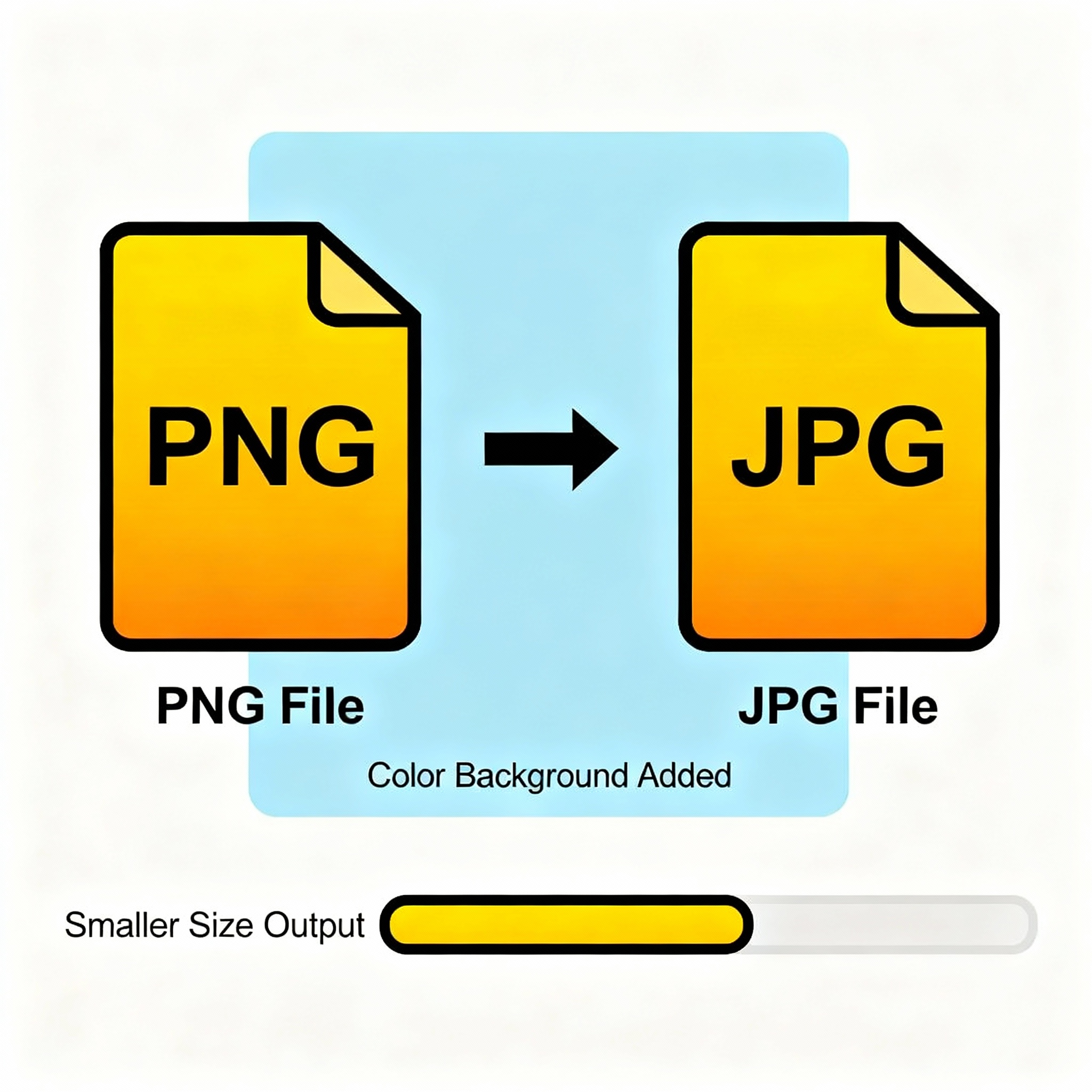
PNG to JPG
Created on 18 October, 2025 • Image Manipulation tools • 23 views • 2 minutes read
Converting PNG to JPG is a common task for web designers, photographers, and anyone managing digital media
PNG to JPG: Effortless Image Conversion for Web and Design
Why Convert PNG to JPG?
Converting PNG to JPG is a common task for web designers, photographers, and anyone managing digital media. While PNG (Portable Network Graphics) images offer high quality and support for transparency, JPG (JPEG) files are smaller and more widely supported, making them ideal for websites, emails, and fast-loading online galleries.
Situations Requiring PNG to JPG Conversion
- Faster website loading: JPG files are better for large photos and can dramatically speed up web pages.
- Email attachments: JPG’s smaller size is more manageable for sending images via email or messaging apps.
- Platform compatibility: Some platforms, apps, or print services require JPG format for optimal results.
- Storage management: JPGs save disk space for users with hundreds or thousands of pictures to organize.
How Does PNG to JPG Conversion Work?
Conversion Algorithms
Conversion tools work by re-encoding the image data. The primary difference is that PNG uses lossless compression (no data lost), while JPG uses lossy compression (some data is discarded for a much smaller file). During conversion, transparency in PNG images is usually replaced by a solid color background, since JPG doesn’t support alpha channels.
Easy-to-Use Tools
- Online converters: Drag-and-drop websites let you upload PNG files and instantly download JPGs without installing software.
- Image editors: Programs like Photoshop, GIMP, or Paint.NET provide advanced options—batch conversion, background color settings, or quality adjustments.
- Mobile apps: On-the-go conversion available for iOS and Android, making it simple to share images from your phone.
Benefits of JPG Format
Smaller File Size
JPG compression significantly reduces file size, which saves bandwidth, speeds up website performance, and makes image storage more practical—especially for photo-heavy blogs and e-commerce sites.
Wide Compatibility
Virtually all devices, image viewers, web browsers, and social media platforms support JPG, ensuring your images display correctly everywhere.
Enhanced Page Speed and SEO
Google and other search engines prioritize websites that load quickly. Optimizing images by converting PNG to JPG can boost your Core Web Vitals and improve overall SEO rankings.
Tips for Best Results
- Set background color: Transparent PNGs will have their see-through sections filled when converting; set your preferred color before saving.
- Adjust quality: Balance between quality and size—higher compression reduces storage but may create visible artifacts.
- Retain the original: Always keep a backup of the PNG for future edits or alternate uses.
Conclusion
Converting PNG to JPG is a smart way to optimize images for the web, emails, and universal viewing. With the right converter tool, you’ll enjoy the benefits of faster load times, reduced storage costs, and cross-platform compatibility—key ingredients for modern digital success.
Popular posts
-
GIF to BMPImage Manipulation tools • 353 views
-
GIF to WEBPImage Manipulation tools • 256 views
-
GIF-to-PNGImage Manipulation tools • 190 views
-
SHA-3/512 generatorConverter tools • 152 views
-
GIF to JPGImage Manipulation tools • 122 views